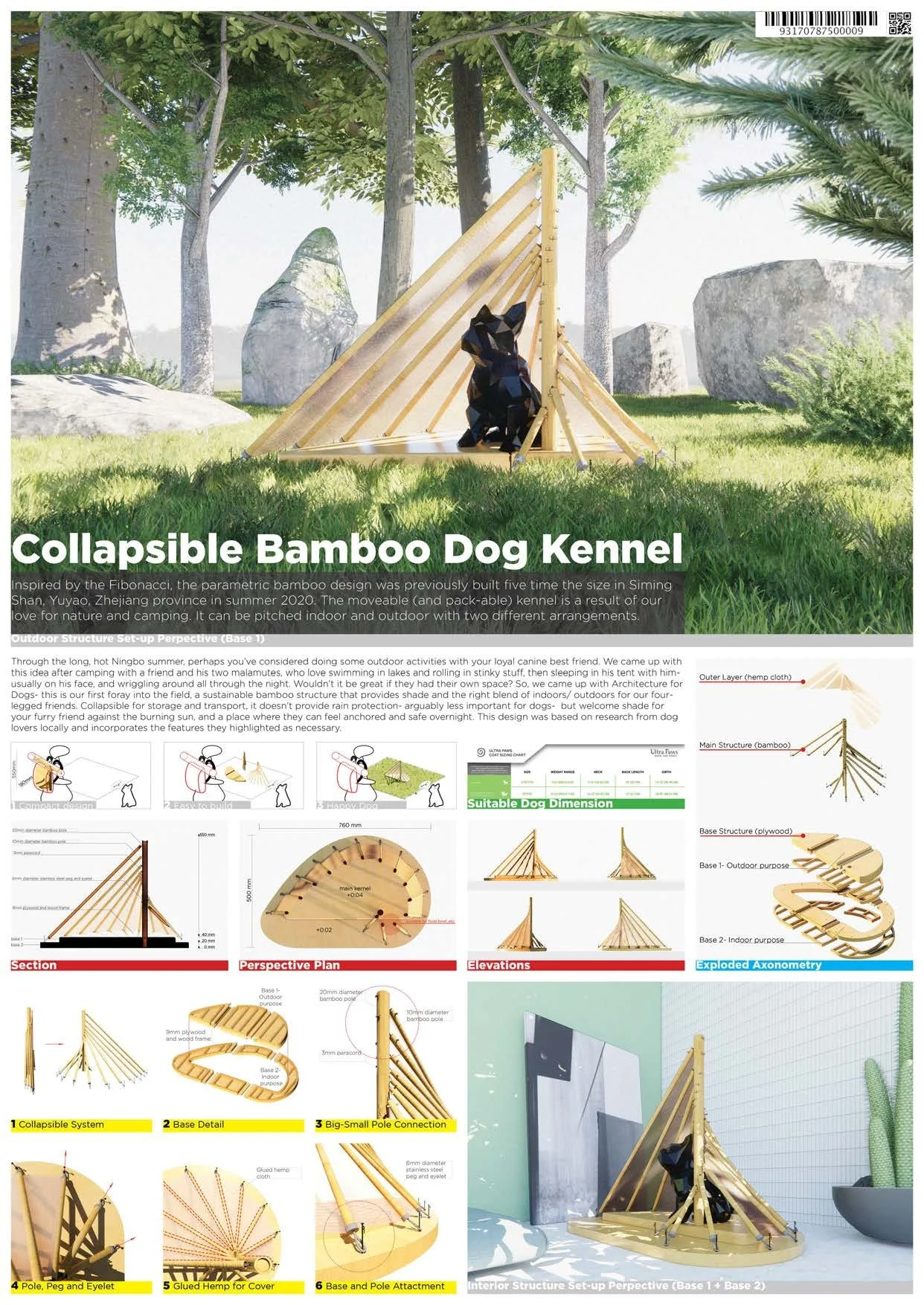AIA x SCAA Animal Shelter Competition
AIA Shanghai/Beijing is honored to announce an inaugural call for design entries to design pet shelters and amenities. This event aims to be a fun activity that engages and connects the design community and beyond while raising funds for non-profit pet organizations contributing to a significant humanitarian cause.
The competition is open to individuals, teams, and firms who would like to contribute their creativity and time to design and create an implementable architectural piece built, documented, exhibited, and auctioned to the highest bidder for a humanitarian cause in September and October.
The winning submissions will be built under the supervision of the teams and AIA Shanghai with the sponsor to ensure safety and usability to the future users of the shelters or items.
Katt
O&O Studio
Platinum Award Winner & People Choice Award Winner: Wall that Space
The story begins with a couple of stray cats in the park next to our office building that enjoy hanging out with people who come here for cigarette break. The building management once thought about providing them shelters to maintain this lovely interaction, as there are plenty of playgrounds and food provided by volunteers already. Speaking of shelter, a box with straw inside that looks like a litter box in the park simply does not meet a typical Shanghai “standard”. It should not be too prominent in presence, and it should be affordable and thief-proof, while being able to coop with the seasonal weather, rain, flood etc. And the ultimate question is, what if the cats do not like them after all?
From our intimate experiences with the 4 adopted cats at home, each of them has distinct behaviours. They are similar to us. How to design shelter to fit stray cats’ need is an issue to be addressed. They are not domestic kitty that are so used to lying on the comfortable sofa and carpet, they may just want to hide and feel secured, or a semi enclosure to chill or spy. So, the shelter has to be extremely adaptive.
This inspired us to design a “house” for cats, just like how we design for ourselves. The house consists of a lid (roof), a skeleton (structure), a base (foundation), and a skin (WALL), which form the SPACE we need and live in. To make this “house” highly adaptive, bring able to respond to different weathers, environment, seasons, and above all, different owners, the WALL has to be versatile. Thus the WALL can be replaced and rebuilt over and over again to create different spaces for different cats and scenarios!
The WALL has to be bendable and has certain degree of elasticity. There are numbers of alternatives like PVC sheet, PE sheet, Sponge, thin plywood sheet with felt, yoga mat etc. that can easily be obtained or to recycle from. The WALL runs between rods, and can end with a cut straw to have better grab to the rod at the very end.
Devon Wang
WAG Architects, Founder
Gold Award Winner: The PAW House
狗是一种对主人忠诚且依赖性比较强的宠物。所以对于狗来说,住在什么样的家不是最重要的,只要主人可以时常陪伴,这个家就是好家。很多狗主人白天需要出门上班,非上班时间也有很多事情需要处理,于是可以陪伴宠物的时间很少。人与宠物是互相陪伴的关系。人选择饲养宠物就要对宠物的生活质量负责任。所以,提高宠物与主人间的互动率就显得十分重要。The Paw House就是可以提高人犬互动率的互动装置。它是狗的家也是人日常经常会使用的家具:坐凳。我在观察了狗狗日常行为之后发现,主人坐在座椅上的时候,狗都会趴在主人的座椅之下。将狗狗的日常行为与不可或缺的家具结合,在坐凳上用狗爪子的图案开洞,使座椅更具有趣味性。主人与宠物之间也可以通过这些小洞逗弄玩耍。这些小洞让座椅消除了主人与宠物之间的边界,使他们的日常关系更加亲密。
Dog is loyal and dependent on its master. It doesn't matter how pretty the dog house looks, as long as the owner is always being there with it, it's a good house. Many dog owners have to go to work during the daytime, and they have a lot of things to deal with during non-working hours, so they have little time to accompany their pets. People and pets are companions. The pet owners are responsible for the quality of their pets' lives. Therefore, it is really important to improve the interaction rate between pets and their owners. The PAW House is an interactive device that increases the rate of human-dog interaction. It is a home for dogs and also a piece of furniture that people use every day: a stool. When I observed the dog's daily behavior, I found that when the owner was sitting in the chair, the dog would always lie under the owner's seat. Combine the dog's daily behavior with the indispensable furniture, and make the seat more interesting by cutting holes in the stool with patterns of dog PAWS. The holes can also encourage owners and pets to play with each other and allow the seat to eliminate the boundary between owner and pet, making their relationship more intimate.
Chen Li 黎辰
Sensor Architecture Studio, Founder
森舍建筑, 创始人/主持建筑师
Xuhan Shi 石旭晗
Silver Prize Winner: The Cat Maze 猫的迷宫
本设计通过包豪斯的理念和现代的表达手法,兼顾实用和艺术性 创造出一个抽象几何形式的猫爬架。同时借用了中国传统家具博古架的空间构成方式 置物板成为了高度错落大小不等的小空格 为猫的路径区分出许多形状不同的空间。空间之间互相串联,犹如垂直的迷宫,很有趣味。猫爬架材料以环保复合木板为主 利用中国传统榫卯插销结构连接,无需额外螺丝固定。
This design creates an abstract geometric cat climbing frame through Bauhaus's concept and modern expression, taking into account practicality and artistry. At the same time, borrowing the space composition of traditional Chinese furniture Bogu shelf, the storage board has become a small space with different heights and sizes, which distinguishes many spaces with different shapes for the path of the cat. The spaces are connected in series, like a vertical maze, which is very interesting. The cat climbing frame is mainly made of environmental protection composite wood, which is connected by Chinese traditional mortise and tenon bolt structure without additional screws.









